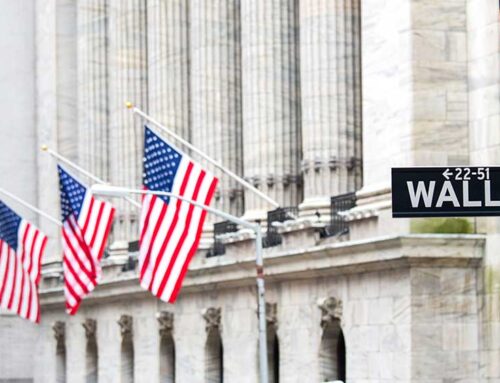Why Poland could be your next best investing bet
May 29, 2025
Why Poland could be your next best investing bet
INVESTMENT EYE
The stock market is up 28 per cent this year, far ahead of its rivals, but a looming election could dramatically change the landscape
Since the start of the year, investors have been finding growth in the most unlikely of places.
The S&P 500, the index of America’s largest companies and a key source of growth for most portfolios over the past two decades, is up only about 1 per cent so far this year. The Nasdaq, a smaller US index dominated by the tech stocks which propelled that growth, is flat.
Meanwhile, the MSCI Brazil index is up 20 per cent, Mexico is up 18 per cent and, very much away from the spotlight, another unlikely market has been creeping consistently higher: Poland.
The main stock market in Poland — the WIG — is up 28 per cent this year, and 30 per cent in the past six months. Since a dip in the autumn of 2022, it’s up 130 per cent. Many think it will keep going.
“Poland has a really strong top-down growth story as well as a good stock market opportunity,” said Rollo Roscow, the manager of the Schroders Eastern European fund. “And valuations still remain cheap. It’s under-invested, under-researched and a strong opportunity.”
Like much of Europe, the Polish stock market had until recently trudged along without any fireworks. In the four years to 2025, gains were just 43 per cent, while the S&P 500 returned 60 per cent over the same period. So what changed?
Part of the turnaround can be traced back to Donald Tusk, a former president of the European Council who became prime minister of Poland for the second time in 2023 (having previously held the office from 2007 to 2014).
• Read more money advice and tips on investing from our experts
The party he replaced — the Law and Justice (PiS) party — had not wooed investors. “The PiS party is considered quite right-wing nationalist, not necessarily good for things like corporate governance, and it was thought that some major corporates listed on the stock exchange were being interfered with,” Roscow said.
“That weighed on market sentiment. There were concerns about the relationship with the EU and about EU funding, which investors felt put the long-term economic growth of Poland at risk.”
But Tusk, a Europhile, has helped to make Poland investable. He had a good backdrop to work with: the country has strong productivity across sectors, strong exports and a good debt ratio.
The war in neighbouring Ukraine has also affected the Polish market. When it began back in 2022, there were fears the conflict would spread across Ukrainian borders, which spooked investors. That risk has diminished over time and when President Trump promised a peace deal at the start of the year, hopes of a resolution in Ukraine grew.
With Poland looking investable, it then benefited alongside Germany, with whom it also shares a border, when investors looked to relocate cash away from the US and into Europe in the aftermath of Trump’s tariff turmoil.
And Poland is a smart defence play. It is one of the few European Nato members to have fulfilled the 2 per cent of GDP spending target over the past decade and Polish military expenditure is projected to reach about 5 per cent of GDP in 2025 and 2026.
In May Poland signed a defence treaty with France which strengthened the countries’ economic collaboration in defence industries, and it is expected to make a similar agreement with the UK in the coming months. The analyst Morningstar expects Poland to secure substantial subsidised loans from the EU for defence projects and for its manufacturing sector to benefit from investing in defence.
If you’re looking to add exposure to Poland in your portfolio, you could opt for a cheap tracker fund. While Poland is classed as an emerging market, it is only a small weighting in the overall emerging markets index. Instead, you could go for the iShares MSCI Poland ETF, which is fully invested in Poland, or Amundi MSCI Eastern Europe ex Russia ETF, which is 70 per cent Polish stocks.
If you prefer active funds, which are more expensive and run by a stock picker, then an Eastern European fund or an emerging Europe fund would give you exposure to Poland. Roscow’s fund, Schroder Emerging Europe, has 40 per cent of its assets in Poland.
• The best investment platforms for beginners
Investing in Poland gives you access to more than 300 stocks (there are about 330 listed on the WIG). It is heavily exposed to financials at 46 per cent, including Santander’s Polish bank, Santander Polska, but energy and manufacturing also make up large chunks of the market.
The make-up of the stock market has also improved. “There have been quite a few IPOs in recent years, which means that the quality of the underlying stock market opportunity is better than it used to be,” Roscow said.
“Historically, the Polish market was skewed to state-owned entities that were not necessarily working for the interests of private investors. Now, though, there are more private sectors with better quality businesses.”
Unfortunately, it’s not all rosy. On Sunday, Poles will vote in the presidential election and it is a tight contest between Rafal Trzaskowski — the candidate from Tusk’s coalition party — and Karol Nawrocki, from the PiS party.
If his party wins, Nawrocki would be able to veto much of Tusk’s government’s plans. If Trzaskowski wins, the reforms put forward by Tusk should go ahead smoothly.
“It’s a risk, and it does matter,” Roscow said. “If the PiS candidate wins then we may see a 5 to 10 per cent stock market drop and they could block much of the reforms going forward. If Tusk’s candidate wins, it will help the stock market.”
Search
RECENT PRESS RELEASES
Related Post










